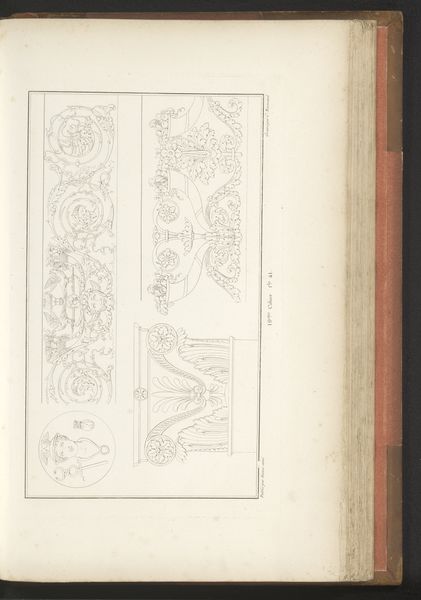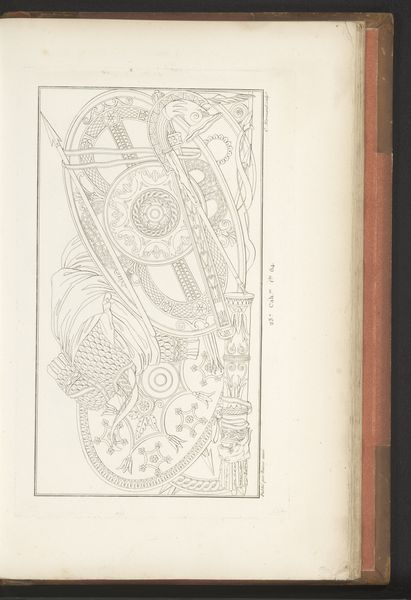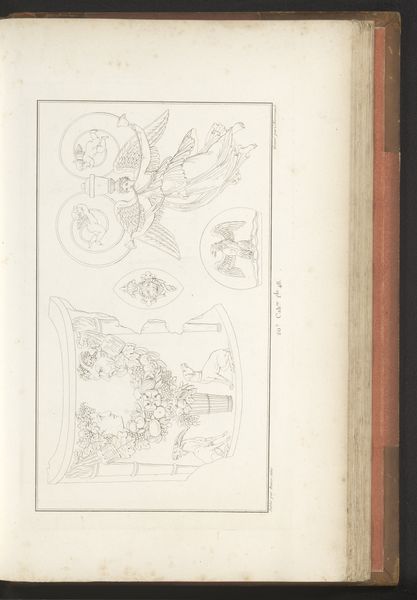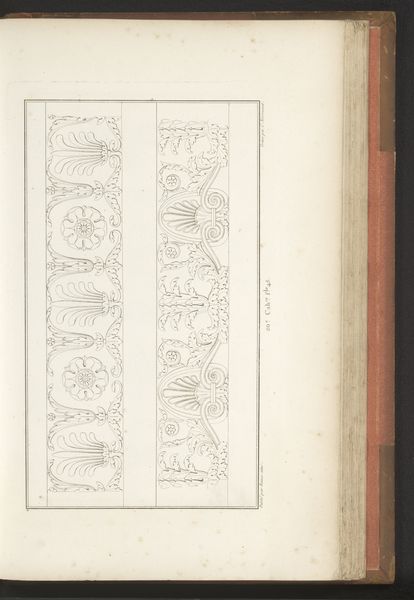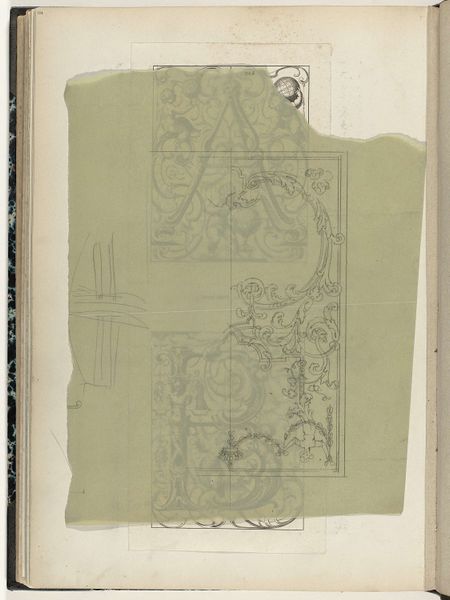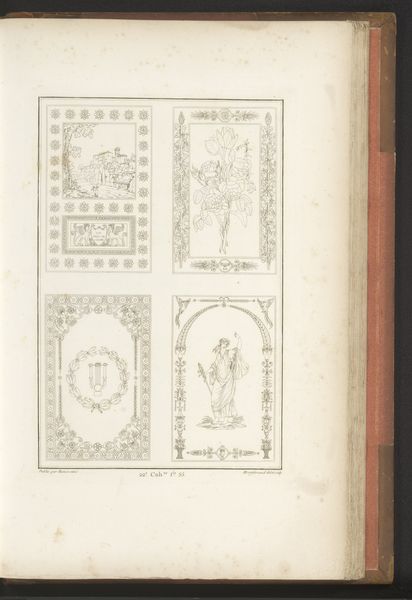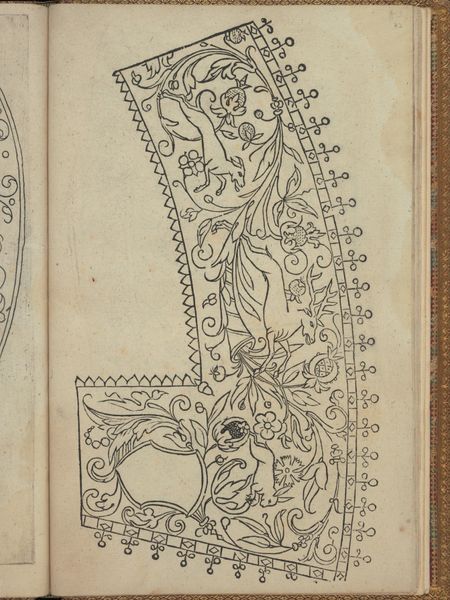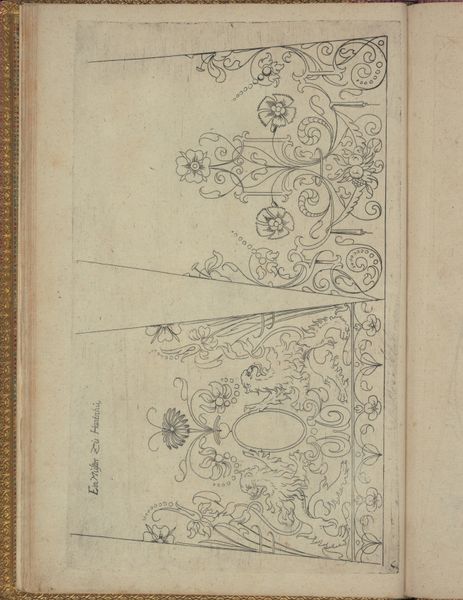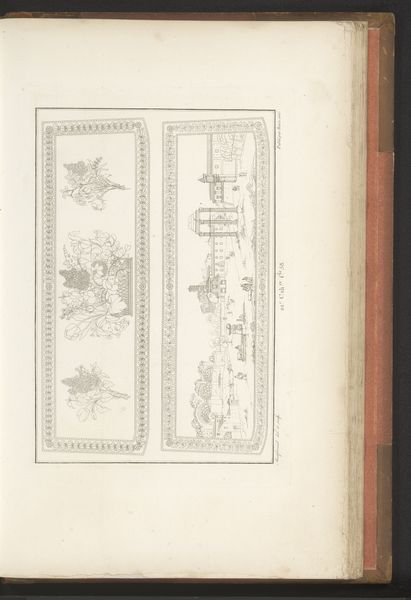
drawing, print, ink, pen, engraving
#
drawing
#
neoclacissism
#
aged paper
#
toned paper
#
medieval
#
ink paper printed
# print
#
pen sketch
#
figuration
#
personal sketchbook
#
ink
#
ink drawing experimentation
#
pen-ink sketch
#
orientalism
#
line
#
pen work
#
sketchbook drawing
#
pen
#
history-painting
#
academic-art
#
sketchbook art
#
engraving
#
realism
Dimensions: height mm, width mm
Copyright: Rijks Museum: Open Domain
Curator: Before us is “Wapentrofee,” created around 1820 by Charles Pierre Joseph Normand. It’s rendered as a print in ink, exhibiting an array of weaponry arranged in a decorative display. What stands out to you most upon seeing this piece? Editor: The intricate detail juxtaposed with the antiquated, almost heraldic arrangement of weapons really catches the eye. There's a clear fascination with the symbolic power of these instruments. You sense something deeper than mere military prowess here. Curator: Indeed. In its time, pieces such as this spoke to a specific masculine ideal, a celebration of chivalry and national pride following the Napoleonic era, though that pride was certainly selective in terms of gender and social hierarchy. Think about how these arms and armour communicate a desire for order after revolutionary upheaval. Editor: I am also intrigued by what seems like a studied interest in their shapes and decoration. The artist must have deeply internalized their significance for them to recreate it like this. Shields become cartouches for symbolism, while the swords themselves seem to point to power as something bestowed from the heavens. The spear always held prominence beyond its battle function. Curator: You raise a critical point, how martial symbols get appropriated to establish lineages of power. Looking at this from the perspective of its possible original audience, which was primarily upper-class men, it's key to think about how it reifies certain political agendas, too. Editor: What do you mean by "reifies," exactly? Curator: I suggest this art doesn’t simply communicate ideologies; rather, it transforms those very ideologies into tangible objects by transforming those beliefs into almost living things, capable of maintaining the status quo and shaping subjectivities within this culture of nationalism. Editor: In any event, I appreciate Normand's line work. It's careful, restrained, allowing these symbols to emanate meaning without appearing gaudy or excessively bellicose. Curator: Yes, he doesn’t overwhelm the viewer with grandiosity. There’s a deliberate control over how the statement gets delivered. Editor: Ultimately, "Wapentrofee," serves as a testament to cultural values encoded in symbols, echoing throughout history. Curator: I completely agree, the piece unveils not just how symbols communicate ideas about identity, but also the political dynamics involved in visualizing it for certain people.
Comments
No comments
Be the first to comment and join the conversation on the ultimate creative platform.

